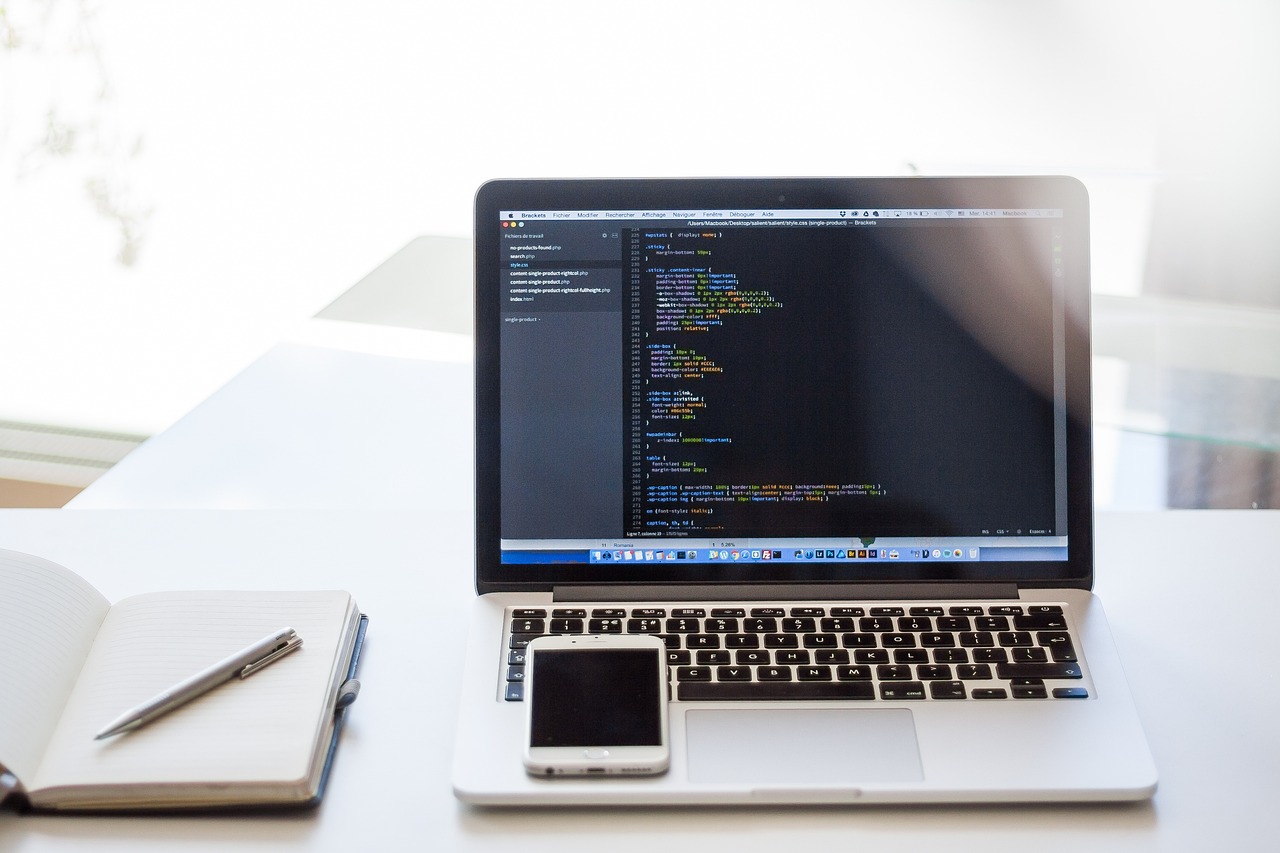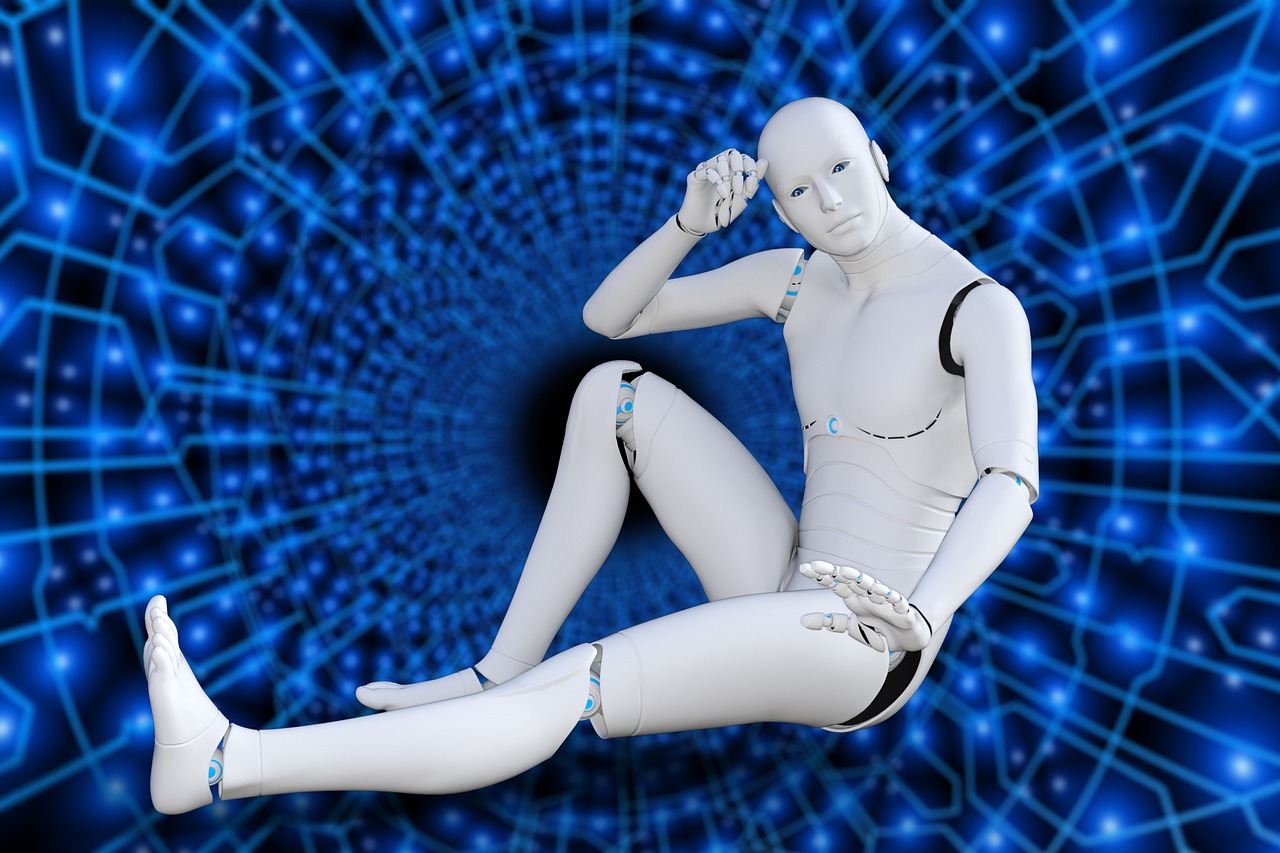Are You Aware Of Deepfake Threats in Social Media?
In today's digital landscape, the term deepfake has become a buzzword that evokes both fascination and fear. As technology advances at a breakneck speed, deepfake tools have become increasingly accessible, allowing almost anyone with a computer to manipulate videos and audio in ways that were once the stuff of science fiction. But what does this mean for us, the everyday users of social media? Are we unwittingly stepping into a realm where reality can be distorted at the click of a button? As we dive deeper into this topic, we must consider the implications of deepfake technology on our trust in media, our personal privacy, and the very fabric of our society.
From altered celebrity videos to fabricated political speeches, deepfakes are not just harmless pranks; they can have serious consequences. Imagine scrolling through your social media feed and coming across a video of a public figure saying something outrageous. At first glance, it seems legitimate, but in reality, it’s a carefully crafted fake designed to mislead and manipulate. This scenario raises critical questions: How can we discern fact from fiction? What safeguards are in place to protect us from this digital deception? The answers to these questions are becoming increasingly complex as deepfake technology evolves.
As we explore the world of deepfake threats, it’s essential to recognize that these technologies are not inherently evil. They can be used for various purposes, including entertainment and art. However, the darker side of deepfakes cannot be ignored. They pose a significant challenge to the credibility of online content, leading to a society where misinformation can spread like wildfire. The implications are vast, affecting everything from personal reputations to national security. So, buckle up as we navigate through the rise of deepfake technology, its impact on trust and credibility, and the ongoing battle to detect and prevent its misuse.
Deepfake technology has rapidly evolved, making it easier to create convincing fake videos. This section discusses the origins and advancements of deepfake tools and their increasing accessibility.
Deepfakes pose significant challenges to trust in online content. Here, we analyze how deepfakes can undermine credibility and influence public perception, especially in news and social media.
Examining real-world examples of deepfake misuse reveals the potential dangers. This part highlights notable incidents where deepfakes have caused harm or spread misinformation.
Deepfakes have been used to manipulate political narratives. This section discusses specific instances where deepfake videos have affected elections and public opinion.
The use of deepfakes can lead to severe privacy violations. We explore how individuals have been targeted and the emotional and legal repercussions they face.
As deepfake technology evolves, so do detection methods. This section outlines the current techniques used to identify and combat deepfakes in social media.
The rise of deepfakes raises important legal and ethical questions. Here, we discuss the challenges lawmakers face in regulating this technology and protecting individuals' rights.
Various countries are attempting to address deepfake issues through legislation. This part examines ongoing efforts and the effectiveness of current laws in curbing deepfake misuse.
Social media platforms play a crucial role in managing deepfake content. We analyze their responsibilities and the measures they are implementing to safeguard users against deepfake threats.
Looking ahead, we explore the future implications of deepfake technology in social media. This section considers both potential advancements and the ongoing challenges they present to society.
- What are deepfakes? Deepfakes are synthetic media where a person’s likeness is replaced with someone else’s, often using artificial intelligence.
- How can I spot a deepfake? Look for inconsistencies in facial movements, voice synchronization, and unnatural expressions.
- What are the legal consequences of creating deepfakes? Legal repercussions vary by country, but they can include fines and imprisonment, especially if used for malicious purposes.
- Can deepfakes be used for positive purposes? Yes, deepfakes can be used in entertainment, education, and art, but ethical considerations must always be taken into account.

The Rise of Deepfake Technology
Deepfake technology has taken the digital world by storm, evolving at an astonishing pace. What started as a niche project among tech enthusiasts has now transformed into a widespread phenomenon that can create incredibly realistic fake videos and audio. The term "deepfake" itself is derived from a combination of "deep learning" and "fake," indicating the use of artificial intelligence to produce synthetic media. This technology utilizes neural networks to analyze and replicate human features, movements, and even voices, making it increasingly difficult to distinguish between reality and fabrication.
The origins of deepfake technology can be traced back to the development of machine learning algorithms, particularly those related to generative adversarial networks (GANs). These networks consist of two components: a generator that creates fake images and a discriminator that evaluates them. The two components work against each other, leading to continuous improvements in the quality of the generated content. As the technology has become more accessible, even amateur creators can now produce deepfakes using user-friendly applications and software.
In recent years, the proliferation of deepfake tools has raised significant concerns about their potential misuse. The ease of access to these tools means that anyone with a computer can create convincing deepfakes, which can be used for various purposes, both benign and malicious. For instance, while some individuals have used deepfake technology for entertainment, such as creating parody videos or enhancing movie effects, the darker side of this technology has been exploited for malicious intent.
As deepfake technology continues to advance, its implications for society grow more complex. The potential for misuse is staggering, and the impact on trust and credibility in online content is profound. With the ability to manipulate video and audio, deepfakes can distort reality, leading to misinformation and confusion. This situation poses a significant challenge for individuals trying to discern what is real and what is fabricated. In a world where seeing is no longer believing, how can we navigate the murky waters of digital content?
Moreover, the accessibility of deepfake technology raises questions about accountability. As more people gain the ability to create and share deepfakes, the lines between reality and fiction blur, making it essential for society to develop robust methods for detection and prevention. Understanding the rise of deepfake technology is the first step in addressing its implications and protecting ourselves from its potential threats.
| Year | Milestone |
|---|---|
| 2014 | Introduction of GANs by Ian Goodfellow |
| 2017 | First deepfake videos appear on social media |
| 2018 | Deepfake detection tools begin to emerge |
| 2020 | Deepfakes used in political campaigns |
| 2023 | Increased legislation and awareness of deepfake threats |

Impact on Trust and Credibility
The rise of deepfake technology has ushered in an era of uncertainty, casting a long shadow over the trust and credibility that underpin our social interactions and media consumption. Imagine scrolling through your social media feed, only to stumble upon a video of a public figure making shocking statements or engaging in questionable behavior. At first glance, it seems credible, perhaps even viral. However, what if that video is a meticulously crafted fake? This unsettling scenario is becoming increasingly common, and it raises critical questions about our ability to discern fact from fiction.
Deepfakes have the potential to erode the very foundation of trust in digital content. When individuals encounter manipulated videos, it can lead to a pervasive sense of skepticism. People might start questioning the authenticity of all media, including news reports, social media posts, and even personal videos shared by friends and family. This skepticism can create a ripple effect, leading to a culture where misinformation thrives and genuine content is dismissed as fake.
Moreover, the implications extend beyond personal interactions. In the realm of journalism, deepfakes can undermine the credibility of news outlets. Imagine a scenario where a reputable news organization broadcasts a deepfake video, only to later discover it was fabricated. The damage to their reputation would be profound, potentially leading to a loss of audience trust that could take years to rebuild. In a world where information is consumed at lightning speed, the stakes are higher than ever.
To illustrate the impact of deepfakes on trust and credibility, consider the following:
| Incident | Impact |
|---|---|
| Deepfake of a political leader | Undermined public trust in government communications |
| Fake celebrity endorsement | Misled consumers, damaging brand reputations |
| Manipulated news footage | Created confusion and spread misinformation |
As we navigate this complex landscape, it's essential to recognize that the effects of deepfakes are not merely theoretical. They can lead to real-world consequences, influencing elections, swaying public opinion, and even inciting violence. The challenge lies in finding a balance between technological innovation and ethical responsibility. As individuals, we must cultivate critical thinking skills, questioning the sources and authenticity of the content we consume.
In conclusion, the impact of deepfakes on trust and credibility is profound and far-reaching. As we grapple with this new reality, we must remain vigilant, questioning everything we see and hear, and advocating for solutions that promote transparency and accountability in media. The fight against deepfakes is not just a technological battle; it's a fight for the integrity of our shared information landscape.
- What are deepfakes? Deepfakes are synthetic media in which a person’s likeness is replaced with someone else’s, often using artificial intelligence.
- How can deepfakes affect trust in media? They can create skepticism about the authenticity of all media, leading to a culture of doubt and misinformation.
- What can be done to combat deepfakes? Increased awareness, education on media literacy, and the development of detection technologies are essential in the fight against deepfakes.

Case Studies of Deepfake Abuse
Deepfake technology is not just a fascinating innovation; it has also become a tool for manipulation and misinformation, leading to real-world consequences. One of the most notorious case studies involved a deepfake video of a well-known political figure. This video, which purportedly showed the politician making inflammatory statements, went viral within hours, significantly impacting public opinion and causing a stir in the political arena. The aftermath revealed how quickly misinformation could spread and how challenging it was to retract once it gained traction.
Another alarming instance occurred in the entertainment industry. A popular actress was targeted by deepfake technology, resulting in a video that made it appear as though she was endorsing a controversial product. This incident not only damaged her reputation but also raised serious concerns about consent and the ethical use of an individual's likeness. The emotional toll on the actress and her family was immense, illustrating how deepfakes can invade personal lives and lead to severe reputational harm.
In the realm of social media, a significant number of deepfake videos have emerged that manipulate the appearances of public figures in compromising situations. For example, a deepfake video of a prominent news anchor was circulated, showing them in a scandalous light. The video was so convincing that even seasoned journalists struggled to distinguish it from reality, leading to widespread misinformation and public outrage. These incidents highlight the urgent need for effective detection methods and the responsibility of platforms to manage such content.
To further emphasize the implications of deepfake abuse, consider the following table summarizing some notable case studies:
| Case Study | Description | Impact |
|---|---|---|
| Political Manipulation | Deepfake video of a politician making false statements. | Influenced public opinion and caused political unrest. |
| Celebrity Exploitation | Actress featured in a misleading deepfake advertisement. | Damaged reputation and raised ethical concerns. |
| News Anchor Scandal | Deepfake video depicting a news anchor in a scandal. | Spread misinformation, leading to public outrage. |
These examples serve as a stark reminder of how deepfake technology can be weaponized, affecting not only the individuals involved but also the broader societal fabric. As viewers become more desensitized to the digital content they consume, the lines between reality and fabrication blur, creating a dangerous environment where trust in media is eroded. The question arises: how can we safeguard against such threats in the future? The answer lies in a combination of technological advancements, legal frameworks, and ethical responsibilities from both content creators and platforms.
- What are deepfakes? Deepfakes are synthetic media where a person in an image or video is replaced with someone else's likeness using artificial intelligence.
- How can I identify a deepfake? Look for inconsistencies in facial movements, unnatural lighting, or mismatched audio. There are also emerging detection tools available.
- What are the legal implications of deepfakes? Laws vary by country, but many jurisdictions are beginning to implement regulations to address deepfake misuse, especially in cases of defamation or privacy violations.
- Can deepfakes be used for positive purposes? Yes, deepfake technology can be used for artistic expression, entertainment, and education, provided it is done ethically and with consent.

Political Manipulation
In recent years, the use of deepfake technology has surged, and its implications for political manipulation are both alarming and fascinating. Imagine watching a video of a political leader making controversial statements, only to later discover that the footage was entirely fabricated. This is not just a hypothetical scenario; it is becoming a reality in today's digital landscape. Deepfakes can be crafted so convincingly that they blur the lines between truth and fiction, leading to a significant erosion of trust in political discourse.
One of the most notorious examples of deepfake technology being used for political manipulation occurred during the 2020 U.S. presidential election. A video surfaced that appeared to show a candidate making inflammatory remarks about a sensitive issue. The video went viral, causing a frenzy on social media platforms. However, it was later revealed that the footage was manipulated, raising profound questions about the integrity of information in our democratic processes.
Deepfakes can have a multitude of effects on political landscapes:
- Spreading Misinformation: Deepfakes can be used to disseminate false information rapidly, shaping public opinion based on lies.
- Undermining Trust: When deepfakes are used to create fake narratives, they can lead to widespread distrust in legitimate news sources and political figures.
- Influencing Elections: The ability to create misleading content can sway voters, impacting election outcomes and democratic processes.
Moreover, the accessibility of deepfake technology means that anyone with basic skills and resources can create and share these manipulated videos. This democratization of misinformation poses a significant challenge, as it is difficult for the average citizen to discern what is real and what is fabricated. As individuals increasingly rely on social media for news, the risk of encountering deepfakes escalates, making it imperative for us to develop critical media literacy skills.
In response to these challenges, various stakeholders, including governments and tech companies, are beginning to take action. Initiatives aimed at detecting and labeling deepfake content are being implemented to help users navigate the murky waters of digital misinformation. However, the rapid pace of technological advancement means that these efforts must continually evolve to keep up with new methods of manipulation.
As we reflect on the implications of deepfakes in the political arena, it is evident that we are at a crossroads. The potential for misuse is immense, and the consequences could be dire. It is crucial for society to engage in open discussions about the ethical responsibilities of content creators, the role of technology in shaping our perceptions, and the need for robust regulatory frameworks to protect the integrity of our democratic processes.
- What are deepfakes? Deepfakes are synthetic media in which a person’s likeness is replaced with someone else's, often using artificial intelligence techniques.
- How can deepfakes affect politics? They can spread misinformation, undermine trust in legitimate sources, and influence elections by creating false narratives.
- What measures are being taken to combat deepfakes? Governments and tech companies are developing detection tools, implementing labeling systems, and promoting media literacy to counter deepfake threats.
- Can deepfakes be legally regulated? Yes, various countries are exploring legislative measures to address the challenges posed by deepfakes, although the effectiveness of these laws varies.

Personal Privacy Violations
In an age where our lives are increasingly intertwined with technology, the emergence of deepfake technology poses a profound threat to personal privacy. Imagine waking up one day to find a video of yourself engaging in activities you never participated in, all fabricated by someone with malicious intent. This scenario is not just a figment of our imagination; it is a growing reality that affects countless individuals.
Deepfakes can be used to create hyper-realistic videos that manipulate a person's likeness without their consent. This can lead to devastating consequences, especially when these videos are disseminated online. Victims often find themselves in a whirlwind of emotional distress, facing not only the embarrassment of being misrepresented but also the potential for long-lasting damage to their personal and professional reputations. The psychological toll can be immense, leading to anxiety, depression, and a feeling of helplessness.
Furthermore, the legal ramifications of deepfake technology are still catching up with its rapid advancement. Many victims struggle to find legal recourse, as existing laws may not adequately address the nuances of deepfake creation and distribution. For example, in many jurisdictions, laws around defamation and privacy invasion are outdated and do not encompass the unique challenges posed by deepfakes. This leaves individuals vulnerable, as they may have limited options for seeking justice.
Consider the case of a public figure whose likeness is used in a deepfake video to promote a false narrative. The implications are staggering: not only does it mislead the public, but it can also lead to serious reputational damage. The emotional stress on the individual can be overwhelming, as they must navigate the fallout from something they did not do. The question arises: how do we protect ourselves in a world where our images can be manipulated so easily?
To combat these privacy violations, it is essential to raise awareness about deepfake technology and its potential abuses. Here are some proactive steps individuals can take to safeguard their privacy:
- Educate Yourself: Stay informed about the latest developments in deepfake technology and its implications.
- Monitor Your Online Presence: Regularly check what is being posted about you on social media and other platforms.
- Report Deepfake Content: If you encounter deepfake videos that misuse your likeness, report them to the platform immediately.
In conclusion, deepfake technology presents a unique challenge to personal privacy, creating opportunities for abuse that can have severe emotional and legal consequences. As we move forward, it is crucial that we advocate for stronger legal protections and raise awareness about the potential dangers of deepfakes. Only by doing so can we hope to reclaim our right to privacy in an increasingly digital world.
What are deepfakes? Deepfakes are synthetic media in which a person's likeness is replaced with someone else's, often using artificial intelligence to create realistic videos.
How can I protect myself from deepfake misuse? Stay informed, monitor your online presence, and report any unauthorized use of your likeness.
Is there legal recourse for victims of deepfakes? While some jurisdictions are starting to address deepfake issues, many victims find it challenging to seek legal action due to outdated laws.

Detection and Prevention Techniques
As deepfake technology continues to advance at a breakneck speed, the need for effective detection and prevention techniques has never been more critical. The very essence of deepfakes lies in their ability to mimic reality so convincingly that they can easily deceive even the most vigilant observers. This raises an important question: how can we safeguard ourselves from falling victim to these highly sophisticated manipulations?
To combat the growing threat of deepfakes, researchers and tech companies are developing a variety of detection methods. Some of the most promising techniques include:
- Machine Learning Algorithms: These algorithms are trained on vast datasets of genuine and fake videos, enabling them to identify subtle discrepancies that the human eye might miss. By analyzing aspects such as facial movements, shadows, and audio synchronization, these systems can flag potentially manipulated content.
- Blockchain Technology: By using blockchain to verify the authenticity of videos, platforms can create an immutable record of content origin. This means that if a video has been altered, the alteration can be traced back to its source, helping to maintain content integrity.
- Digital Watermarking: This technique embeds information within the video itself, which can be used to verify its authenticity. Even if a video is altered, the watermark can reveal its original state, making it easier to detect tampering.
Moreover, social media platforms are stepping up their game by implementing advanced detection systems. For instance, they are leveraging artificial intelligence (AI) to automatically flag suspicious content for further review. This proactive approach not only helps in identifying deepfakes but also in preventing their spread before they can cause significant harm.
However, detection is only half of the battle. Prevention is equally important. Educating users about the existence and dangers of deepfakes can empower them to think critically about the content they consume. Consider this: if someone sees a video that seems too outrageous to be true, they might pause and verify its authenticity before sharing it. This kind of skepticism can significantly reduce the spread of misinformation.
Furthermore, collaborations between tech companies, governments, and educational institutions are essential in developing comprehensive strategies to combat deepfake threats. By working together, these entities can create robust frameworks that not only focus on detection and prevention but also on raising public awareness about the implications of deepfakes.
In conclusion, while the rise of deepfake technology presents serious challenges, it also sparks innovation in detection and prevention methods. As we become more aware of these threats, we can better equip ourselves to navigate the complex landscape of digital content. The key lies in remaining vigilant, informed, and proactive in the fight against deepfakes.
Q1: What are deepfakes?
A1: Deepfakes are synthetic media, usually videos, that have been altered or generated using artificial intelligence to create realistic-looking but fake content.
Q2: How can I identify a deepfake?
A2: Look for inconsistencies in facial movements, unnatural audio, and discrepancies in lighting or shadows. Advanced detection tools can also help flag deepfakes.
Q3: Are there laws against deepfake misuse?
A3: Yes, many countries are working on legislation to address the misuse of deepfakes, particularly in contexts like revenge porn, fraud, and political manipulation.
Q4: How can I protect myself from deepfake threats?
A4: Stay informed about deepfake technology, verify the authenticity of suspicious content, and report any deepfake videos to the appropriate platforms.

Legal and Ethical Implications
The rise of deepfake technology has ushered in a new era of challenges that intertwine legal and ethical considerations. As these realistic fakes proliferate across social media, the question arises: how do we protect individuals and maintain societal integrity? The rapid evolution of deepfake tools has outpaced existing laws, leaving a significant gap in regulations. This gap creates a precarious landscape where individuals' rights can be easily violated, and misinformation can spread like wildfire.
One of the most pressing legal challenges is the issue of intellectual property rights. Deepfakes often involve the unauthorized use of someone's likeness or voice, raising questions about consent and ownership. Imagine a celebrity's face being superimposed on a controversial video without their permission; this not only damages their reputation but also distorts the truth. Various jurisdictions are grappling with how to address these violations, and many are still lagging behind in crafting effective legislation.
Moreover, the ethical implications of deepfakes stretch beyond individual rights. They pose a significant threat to public trust. When people can no longer distinguish between authentic content and manipulated media, the foundation of informed decision-making erodes. This is particularly alarming in contexts such as politics and public health, where misinformation can lead to disastrous consequences. To illustrate this point, consider the following table that highlights key ethical concerns surrounding deepfake technology:
| Ethical Concern | Description |
|---|---|
| Consent | Using someone's likeness without their permission raises ethical questions about personal autonomy. |
| Misinformation | Deepfakes can easily spread false information, leading to public confusion and distrust. |
| Accountability | Determining who is responsible for creating and disseminating deepfakes complicates legal proceedings. |
| Impact on Society | Widespread use of deepfakes can undermine social cohesion and democratic processes. |
As lawmakers strive to catch up, there are ongoing efforts worldwide to establish a framework for addressing deepfake issues. Some countries have introduced legislation targeting the creation and distribution of malicious deepfakes, while others are exploring broader measures that encompass digital rights and privacy laws. However, the effectiveness of these laws remains to be seen, as enforcement can be challenging in the rapidly changing digital landscape.
Furthermore, social media platforms bear a significant ethical responsibility in managing deepfake content. They are at the frontline of the battle against misinformation and must implement robust policies to protect users. This includes investing in detection technologies and establishing clear guidelines for content moderation. Yet, the question remains: are these platforms doing enough? The balance between freedom of expression and the need to prevent harm is delicate, and finding the right approach is crucial.
In conclusion, the legal and ethical implications of deepfake technology are complex and multifaceted. As society navigates this uncharted territory, it is imperative that we engage in open dialogues about the responsibilities of individuals, corporations, and governments. Only through collective action can we hope to mitigate the risks associated with deepfakes and safeguard our shared digital future.
- What are deepfakes? Deepfakes are realistic-looking fake videos or audio recordings created using artificial intelligence technology.
- How can deepfakes affect individuals? They can lead to privacy violations, reputational damage, and emotional distress for those depicted in the manipulated content.
- Are there laws against deepfakes? Some countries have introduced legislation targeting malicious deepfakes, but laws vary widely and enforcement can be challenging.
- What can social media platforms do? Platforms can implement detection technologies, establish content moderation guidelines, and promote awareness about the risks of deepfakes.

Legislation Efforts Worldwide
The rapid advancement of deepfake technology has prompted a global response from lawmakers who are grappling with the implications of this powerful tool. As deepfakes become more sophisticated and accessible, the need for effective legislation has never been more urgent. Countries around the world are beginning to recognize the potential for deepfakes to cause significant harm, and they are taking steps to address this emerging threat.
In the United States, various states have introduced bills aimed at regulating the creation and distribution of deepfake content. For instance, California passed a law that makes it illegal to use deepfakes for malicious purposes, such as to harm or defraud individuals, particularly during elections. This law serves as a precedent for other states to follow, highlighting the importance of protecting both individuals and the electoral process from manipulation.
Across the Atlantic, the European Union is also taking a proactive stance. The EU's proposed Digital Services Act aims to hold platforms accountable for the content they host, which includes deepfake videos. This legislation seeks to ensure that social media companies take responsibility for monitoring and removing harmful content, thereby creating a safer online environment for users. However, the challenge lies in defining what constitutes a deepfake and how to effectively detect and manage such content.
In Asia, countries like Singapore and China are exploring their own regulatory frameworks. Singapore has implemented the Protection from Online Falsehoods and Manipulation Act, which empowers authorities to combat the spread of false information, including deepfake content. Meanwhile, China has introduced strict regulations that require deepfake creators to label their content clearly, ensuring that viewers are aware they are watching manipulated media.
Despite these efforts, the legislation surrounding deepfakes is still in its infancy. Many countries are struggling to keep pace with the rapid development of technology, leading to gaps in legal protections. This situation raises important questions about the balance between innovation and regulation. How can lawmakers create effective laws without stifling creativity and technological advancement? Furthermore, there is an ongoing debate about the ethical implications of regulating deepfakes, as overly stringent laws could infringe on freedom of expression.
As we look toward the future, it is clear that a collaborative international approach will be crucial in addressing the challenges posed by deepfake technology. Countries must work together to share best practices and develop comprehensive frameworks that not only protect individuals but also foster innovation. The ongoing dialogue among lawmakers, tech companies, and civil society will be essential in shaping the future landscape of deepfake legislation.
- What are deepfakes? Deepfakes are synthetic media in which a person's likeness is replaced with someone else's, often using artificial intelligence to create realistic videos or audio.
- Why are deepfakes a concern? They can be used to spread misinformation, manipulate public opinion, and violate personal privacy, leading to significant societal implications.
- How are governments addressing deepfake issues? Various countries are implementing laws that regulate the creation and distribution of deepfakes, focusing on protecting individuals and maintaining public trust.
- What can individuals do to protect themselves from deepfakes? Staying informed about the technology, verifying sources, and reporting suspicious content can help individuals navigate the challenges posed by deepfakes.

Ethical Responsibilities of Platforms
As deepfake technology continues to evolve, social media platforms find themselves at a critical crossroads. They are not just facilitators of content but also gatekeepers of information integrity. The ethical responsibilities of these platforms are profound and multifaceted. First and foremost, they must prioritize the safety and well-being of their users. This involves implementing robust systems to detect and mitigate the spread of deepfake content. But how do they achieve this? It’s not just about technology; it’s about fostering a culture of accountability and transparency.
Platforms like Facebook, Twitter, and YouTube have started to take steps towards addressing deepfake issues, but there’s still a long way to go. For instance, they can employ advanced algorithms and artificial intelligence to flag potentially harmful content before it goes viral. However, the challenge lies in balancing this with users' rights to free expression. It’s a delicate dance, akin to walking a tightrope—one misstep could lead to censorship and backlash from users who feel their voices are being stifled.
Moreover, social media companies have a duty to educate their users about the risks associated with deepfakes. This could involve creating informative campaigns that explain what deepfakes are, how to identify them, and the potential consequences of sharing such content. By empowering users with knowledge, platforms can transform them from passive consumers of information into active participants in the fight against misinformation.
Another ethical consideration is the collaboration with external organizations and experts. Platforms can benefit from partnerships with academic institutions, fact-checking organizations, and even law enforcement agencies. These collaborations can help develop comprehensive strategies for identifying, reporting, and removing malicious deepfake content. By pooling resources and expertise, platforms can enhance their effectiveness in combating this issue.
In addition to these proactive measures, social media platforms must also establish clear policies regarding the consequences of sharing deepfake content. Users need to understand that there are repercussions for spreading misinformation, whether intentional or not. This could include temporary suspensions, permanent bans, or even legal action in severe cases. By setting clear guidelines, platforms can help deter users from engaging in harmful behavior.
Ultimately, the ethical responsibilities of social media platforms in the age of deepfakes are not just about technology; they are about creating a safer, more informed online environment. As these platforms continue to evolve, so too must their commitment to ethical standards and practices. It’s a continuous journey, one that requires vigilance, adaptability, and a genuine concern for the impact of their services on society.
- What are deepfakes? Deepfakes are synthetic media in which a person’s likeness is replaced with someone else’s, often using artificial intelligence to create realistic-looking videos or audio.
- How do deepfakes affect social media? Deepfakes can undermine trust in online content, spread misinformation, and violate personal privacy, leading to significant social and political ramifications.
- What can social media platforms do to combat deepfakes? Platforms can implement detection technologies, educate users, establish clear policies, and collaborate with external organizations to address the issue effectively.
- Are there laws regulating deepfakes? Yes, various countries are working on legislation to address the misuse of deepfakes, but laws vary significantly by region and are still evolving.

Future of Deepfake Technology
As we look into the , it’s clear that we are standing on the precipice of both incredible advancements and significant challenges. The rapid evolution of artificial intelligence (AI) and machine learning is making it easier than ever to create hyper-realistic deepfakes. This technology, while fascinating, raises important questions about the implications for society, governance, and individual rights.
One of the most pressing concerns is the potential for deepfakes to become even more sophisticated and harder to detect. Imagine a world where a deepfake video of a public figure is indistinguishable from a real clip, raising the stakes in the realms of politics, entertainment, and social discourse. The consequences could be dire, especially when misinformation spreads like wildfire across social media platforms. As deepfake technology becomes more accessible, it’s crucial for both individuals and organizations to stay informed and vigilant.
On the flip side, the future may also bring innovative solutions for detecting and combating deepfakes. Researchers and tech companies are actively working on developing AI-driven detection tools that can analyze video and audio content for signs of manipulation. These tools aim to identify inconsistencies, such as unnatural facial movements or discrepancies in audio synchronization. The race is on between deepfake creators and those trying to unveil the truth, making it a fascinating battleground of technology.
Moreover, the growing awareness of deepfake threats is prompting social media platforms to take action. Companies like Facebook and Twitter are investing in advanced algorithms to flag potential deepfake content before it spreads. They are also implementing stricter policies regarding the distribution of manipulated media. However, the effectiveness of these measures will depend on continuous updates and the ability to adapt to new deepfake techniques.
As we navigate this complex landscape, it’s essential to consider the ethical implications of deepfake technology. With great power comes great responsibility, and the creators of deepfake tools must grapple with their potential misuse. Are they merely providing a canvas for artistic expression, or are they enabling malicious actors to distort reality? The answer to this question will shape the future of deepfake technology and its role in our society.
In summary, the future of deepfake technology is a double-edged sword. While it offers exciting possibilities for creativity and innovation, it also poses significant risks to trust and credibility in media. As we move forward, it’s crucial to foster a culture of awareness and responsibility, ensuring that we harness the benefits of this technology while mitigating its dangers.
- What are deepfakes? Deepfakes are synthetic media in which a person’s likeness is replaced with someone else's, often using AI technology.
- How can I identify a deepfake? Look for inconsistencies in facial movements, unnatural audio, or discrepancies in lighting and shadows.
- What are the potential dangers of deepfakes? Deepfakes can spread misinformation, manipulate public opinion, and violate personal privacy.
- Are there laws against deepfakes? Legal frameworks are still evolving, but many countries are working on legislation to address the misuse of deepfakes.
- How can social media platforms combat deepfakes? Platforms are investing in detection tools, implementing stricter policies, and raising awareness about deepfake content.
Frequently Asked Questions
- What are deepfakes?
Deepfakes are synthetic media, typically videos or audio recordings, that have been altered using artificial intelligence to make it appear as though someone is saying or doing something they did not actually say or do. This technology can create hyper-realistic content that can be difficult to distinguish from genuine footage.
- How is deepfake technology created?
Deepfake technology relies on deep learning algorithms, particularly a type called Generative Adversarial Networks (GANs). These algorithms analyze a large dataset of images and videos of a person to learn their facial expressions, voice, and mannerisms, allowing the creation of realistic fake media.
- What are the dangers of deepfakes on social media?
Deepfakes can spread misinformation, damage reputations, and manipulate public opinion. They can be used to create false narratives, especially in political contexts, leading to confusion and distrust among viewers. The potential for harassment and personal privacy violations is also a significant concern.
- How can I identify a deepfake?
Identifying deepfakes can be challenging, but there are some signs to look for, such as unnatural facial movements, inconsistent lighting, and audio that doesn't match the lip movements. There are also emerging detection technologies that analyze videos for inconsistencies that may indicate manipulation.
- Are there any laws against deepfakes?
Yes, various countries are working on legislation to address the misuse of deepfake technology. These laws aim to protect individuals from harassment, defamation, and other harms caused by deepfakes. However, the legal landscape is still evolving, and enforcement can be challenging.
- What responsibilities do social media platforms have regarding deepfakes?
Social media platforms have a crucial role in managing deepfake content. They are responsible for implementing detection systems, educating users about the risks of deepfakes, and removing harmful content. Many platforms are actively working to enhance their policies and technologies to combat deepfake threats.
- What is the future of deepfake technology?
The future of deepfake technology is a double-edged sword. While it has potential for creative uses in entertainment and education, the risks associated with its misuse continue to grow. Ongoing advancements in detection and regulation will be essential to mitigate these risks and protect individuals and society.



















